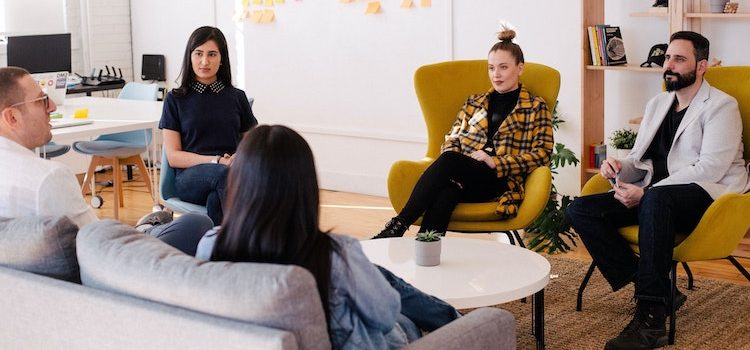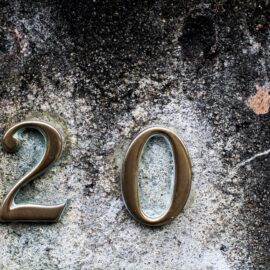
Do you know when you’re objectifying people? Are you susceptible to believing lies? Are you a hedgehog or a fox?
Everyone has biases, but you can come out on top by recognizing what biases you have and taking steps to minimize their negative impact on the way you perceive reality. We put together eight bias exercises based on works by Malcolm Gladwell, Philip Tetlock, Lao Tzu, and others.
Let’s dive into these exercises, which you can complete individually or with a group.
Exercise 1: Identify Your Biases That Objectify Others
In The Anatomy of Peace, the Arbinger Institute discusses how we perpetuate conflict by misunderstanding its cause and acting inappropriately as a result. They identify four biases that prevent us from seeing others as people:
- The Superiority Bias: We justify seeing others as objects and mistreating them by telling ourselves we’re better than they are. We feel impatient, disdainful, or indifferent
- The Entitlement Bias: We justify seeing others as objects and mistreating them by telling ourselves we deserve more than they do. We feel entitled, deprived, or resentful.
- The Performative Bias: We justify seeing others as objects and mistreating them by telling ourselves we need to be seen in a certain way. We feel anxious/stressed, needy/fearful, or overwhelmed/overburdened.
- The Inferiority Bias: We justify seeing others as objects and mistreating them by telling ourselves we’re not good enough to do better. We feel helpless/despairing, bitter/jealous, or depressed/lonely.
If you find yourself blaming others, justifying your behaviors, making the world or the people around you look horrible, or feeling any of the emotions associated with each of these four biases, you should consider the strong possibility that you’re biased in at least one of these ways. Use this bias exercise to help you find out.
- Think of a conflict you’ve recently had with another person. How did you blame them, another person, or outside circumstances for the cause or outcome of that conflict?
- How did you justify your behavior or reaction either during the conflict or in the events leading up to it?
- How did you, this person, or the world begin to look especially horrible?
- Describe the way you felt during and after the conflict, in as much detail as you can.
- Take a look at the feelings associated with each of the Four Biases. Which biases align most accurately with the feelings you described above? (Remember: It’s possible to be biased in more than one way at a time.)
Exercise 2: Remove the Bias and Rethink the Situation
Revisit the situation you described in the previous exercise. What follows are the second and third steps at the core of the cooperative mindset: Remove the bias, and rethink the situation. Repeat this process whenever you find yourself holding a bias or in a conflict; it’ll help you maintain a cooperative mindset and prime your conscience to give you an actionable push.
- Think about a person you’re not biased against, and write down their name. Describe an experience you shared with that person where you felt he or she acknowledged and respected your needs and the weight you were carrying.
- From this perspective, take another look at the person you described being in conflict with before. What are the weights they’re carrying, and which of their needs aren’t being met?
- How are you adding to those weights? In what way have you neglected their needs or mistreated them?
- How are the biases you listed blinding you to the truth about that person and yourself? How are those biases interfering with potential solutions?
- Take another look at what you’ve written in this exercise. How can you help this person like your “safe” person might help you? What are you feeling you should do? When you’re done answering, act.
Exercise 3: Confront Your Ingrained Biases
In Blink, Malcolm Gladwell warns that we can fall prey to unconscious biases we don’t even know we have. As Gladwell points out, our snap judgments can be both the product and the root of prejudice and discrimination.
Acknowledging your biases is difficult and uncomfortable. It’s also crucial to improving your snap judgments and aligning your unconscious attitudes with your conscious ones. In this bias exercise, reflect on your experiences and how they may have influenced your biases.
- Try not to think too much about your answers to the following questions. Capture your gut reactions: When you read the word “leader,” who do you picture? What about “lawyer”? “Parent”? “CEO”?
- Take a look at your “pictures.” Do they tell you anything about your inherent biases? Do your pictures follow historical gender norms? Do the people in your gut-reaction images share your skin color?
- Think about your hometown and the schools you attended. Think about your childhood friendship groups. Did the people you spent the most time with look like you? Did they share your culture? Your religious beliefs? Your values? Jot down a few of the shared beliefs and cultural attitudes of your community, schools, or friendship groups.
- How might your community and past experiences have influenced your unconscious beliefs about who can be a leader, lawyer, parent, or CEO?
- What conscious steps can you take to counter these biases? (Remember, you can change your experiences to change your unconscious beliefs.)
Exercise 4: Finding Howard Within Heidi
Lean In, by Facebook COO Sheryl Sandberg, explores the professional, personal and societal hurdles holding women back from leadership positions in the workforce.
The context of this bias exercise is a 2003 study that tested perceptions of men and women in the workforce. The case study of a successful entrepreneur named Heidi was given to one group. An identical study was given to a second group, but with Heidi’s name changed to Howard. The students respected Heidi and Howard equally, but gave Howard greater likeability scores. The takeaway: Men can be decisive and driven and remain likeable, but women are punished for acting the same way. Society expects women to act in a nurturing and communal way.
- Do you harbor some biases you don’t even know about?
- Have you ever viewed a woman in a leadership position negatively? What are the qualities she exhibited that made you dislike her?
- Now, imagine she was a man, and the man behaves the same way she did. Would you dislike him as much? Why or why not?
Exercise 5: Test Your Confirmation Bias
In A Warning, the anonymous author contends that Trump’s supporters believe his lies because of their confirmation bias. This bias is a human tendency, now abetted by social media, to interpret new information in a way that supports our existing views. Trump exploits this by reinforcing his supporters’ prejudices with false information. For instance, if you think government is corrupt, you’ll believe Trump’s conspiracy theories about a Deep State that’s out to destroy him.
For this bias exercise, consider the deep ideological and partisan divide in our country. It’s partly driven by “confirmation bias,” or the tendency to interpret information in a way that supports our preexisting views. Social media, politicians, and partisan commentators play to this bias.
- Test your confirmation bias. Think of a topic that you get fired up about. What’s your strongest belief about this topic and why?
- Now Google your belief statement, checking it against multiple sources, including fact-checking websites, to test its accuracy. In what ways is your belief accurate and inaccurate?
- How can you reword your belief to reflect facts and nuance? How can being alert to confirmation bias affect your future conversations and reactions on the topic?
Exercise 6: Are You a Hedgehog or a Fox?
In Superforecasting, Philip Tetlock shares that he first discovered that some forecasters are more accurate than others thanks to a decades-long study called “Expert Political Judgment” (EPJ). He split the forecasters in that tournament into two groups based on their performance: one that did no better (and sometimes much worse) than chance, and another that did slightly better. Tetlock named the first group “Hedgehogs” and the second group “Foxes,” based on Isaiah Berlin’s classic philosophy essay entitled “The Hedgehog and the Fox.” (The title comes from a line from an ancient Greek poem: “The fox knows many things but the hedgehog knows one big thing.”)
According to the Tetlock and coauthor Dan Gardner, forecasters in the “hedgehog” group are passionately ideological thinkers who see the world through the lens of a Big Idea. They organize new information to fit their Big Idea, and they ignore any information that doesn’t fit that paradigm. The “Big Ideas” themselves vary widely from liberal to conservative and everything in between. Foxes, on the other hand, are “eclectic experts” who have a wide range of analytical tools at their disposal rather than a single Big Idea. The authors argue that this allows foxes to be more flexible, changing their approach based on the particular problem.
By nature, we all lean more toward either fox or hedgehog thinking. This bias exercise will help you reflect on the way you think and identify biases that might be holding you back.
- You may have recognized parts of yourself in the descriptions of hedgehogs and foxes. Overall, would you describe yourself as a hedgehog, a fox, or a hybrid? Why?
- The old saying tells us that hedgehogs know “one big thing,” but no matter our natural thinking style, most of us have a strong belief or guiding principle in at least one area of our lives (like “the government should provide healthcare to all its citizens,” “people are fundamentally good,” or “depleting natural resources is morally wrong”). What “one big thing” do you know?
- Strong beliefs are not a bad thing, but they do have the power to cloud our judgment. Can you think of a situation when your “one big thing” might have stopped you from seeing the full picture? If not, can you think of a situation where your “one big thing” might skew your perspective?
- Critically analyzing our own tightly-held beliefs isn’t easy. How did it feel to acknowledge the ways your “one big thing” might create mental blindspots? Would this kind of thinking be helpful in any specific area of your life? Which ones?
Exercise 7: Maintain Objectivity
Tao Te Ching by Lao Tzu asserts that, to live according to the Tao, you should strive to achieve balance through objectivity. The Tao is the birthplace of all things and doesn’t discriminate between good and evil. In the same way, you must embrace all people and things, disregarding any sense of personal perspective and removing the concepts of good and evil from your mind.
When we label or define our surroundings, we create conflict, attributing particular qualities based on our personal biases. This manipulates our view of reality. Objectivity is one of the most important aspects of living according to the Tao. If you allow your personal biases to influence your decision-making, you won’t be able to truly engage with the world around you.
- Describe a time that you allowed your personal bias to influence your decisions in a negative way.
- Knowing what you know now, how did the reality of the situation differ from your perspective on the situation?
- With these differences in mind, if you had the opportunity to relive this situation, how would you have approached it differently?
Exercise 8: Examine Your Sources of Bias
In Naked Statistics, Charles Wheelan writes that biased data can sabotage otherwise sound research methods and statistical calculations. Sources of bias in data may be glaringly obvious or so subtle as to go unnoticed. If we want our data to be reliable, we should be aware of and take steps to mitigate potential sources of bias.
For this bias exercise, consider the following hypothetical research scenario:
Researchers interested in the effect of yoga and meditation on emotional wellbeing set up a booth at a large ashram on the last day of a week-long yoga retreat. (Their null hypothesis is that participating in yoga and meditation every day has no impact on emotional well-being.) As participants leave the retreat, many stop by the booth to fill out the researchers’ questionnaire, where they are asked whether they believe that yoga and meditation have a positive impact on their emotional well-being and to rate their sense of emotional well-being today compared to the first day of the retreat. Using this data, the researchers reject their null hypothesis and publish a paper entitled: “Daily Yoga Practice Universally Improves Emotional Well-Being.”
- What sources of selection bias can you identify in this study? (Remember, selection bias happens when our sample is not random, and certain subsets of the population are over- or underrepresented.)
- What sources of recall bias can you identify in this study? (Remember, recall bias happens when we ask people to give us data on the effect of a treatment or event retroactively.)
- What sources of healthy user/survivorship bias can you identify in this study? (Remember, healthy user bias happens when people who engage in the treatment we’re studying are fundamentally different from other groups. Survivorship bias happens when our sample consists of only those who remain at the end of a “treatment.”)
- How could the researchers redesign their study to be less biased?






